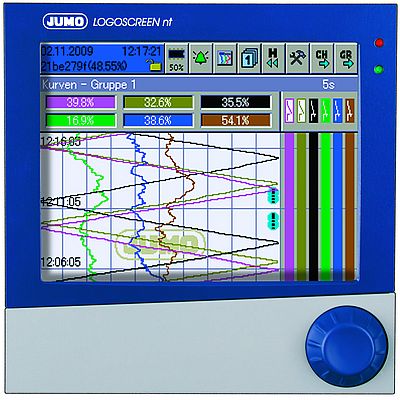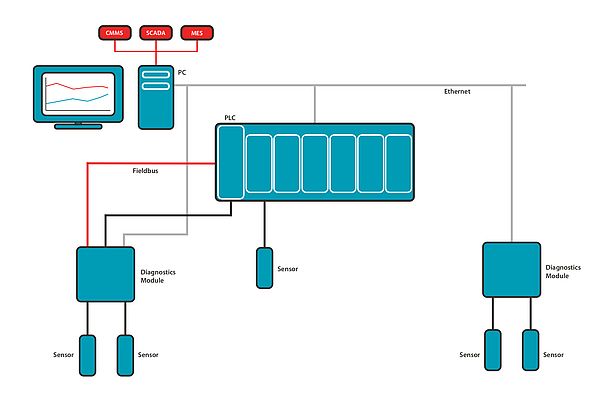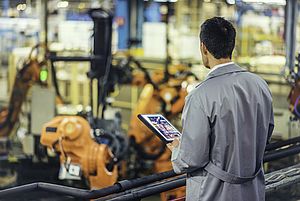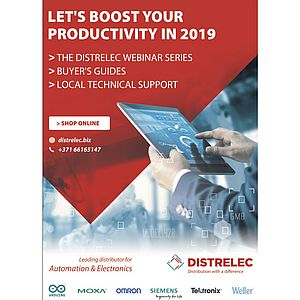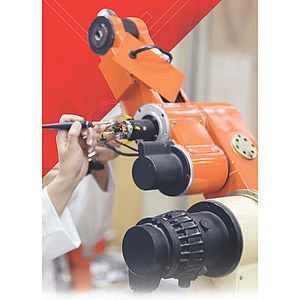There are many definitions of Industry 4.0, but in essence it describes the trend of automation and data exchange in manufacturing, process and production technologies, which include interfacing with themselves, cyber-physical systems, the Industrial Internet of things (IIoT), the cloud (storage and computing) and, a little further along, cognitive computing and AI.
So why is this important? Data plays a huge role in the dynamics of a manufacturing operation, providing the basis for decisions that can have a profound effect on efficiency, efficacy and throughput. Modern, connected, smart factories get this data in real time, meaning that these decisions can be made almost instantly, delivering tangible results far quicker than a weekly progress meeting.
A real digital revolution
Far from being a short-term fad, or throwaway marketing message that is being used to sell more products, this data connectivity and the smart factory concept are being driven by customers and end users in every country and across almost every conceivable industry and application. For this reason, OEMs that do not supply data-capable machines face the real possibility of being sidestepped in favour of those who do. Without data there is no knowledge and without knowledge there is no progress.
There are many other reasons why contemporary automation systems can deliver benefits in addition to those relating to data. Agility is another primary driver of the smart factory. End users want machines that can be modified on the fly. They want minimal downtime as they switch between batches or products to cater for consumer fads and they want to be able to reduce batch sizes without economies of scale having such a large impact.
Agility and flexibility
This type of agility is only possible with modern automation solutions, such as servo-controlled axes running over digital architectures. Cams and fixed-pitch chains certainly perform admirably in machine applications, but they are legacy technologies that simply do not deliver the capabilities above and beyond their intended single purpose.
Another major benefit from contemporary automation is, very simply, the performance gains you will achieve in terms of throughput, uptime and return on investment (ROI). Servo systems may be perceived to be more complicated and more expensive, but in the greater scheme of things, when you consider overall equipment effectiveness (OEE), modern solutions eclipse the ratings of their traditional mechanical peers. The capital expenditure may be higher, but the operating expenditure will be lower.
Modernization exercise
The first step of any machine modernization exercise is to decide what hardware you need to perform the functions you require and, just as importantly, how they are going to “talk” to each other and your wider enterprise, in order to deliver the two-way data exchange that underpins Industry 4.0. Many industrial fieldbus protocols exist, covering different levels and applications, but at the higher-level Ethernet and Ethernet-based systems are rapidly gaining a foothold.
Most major automation vendors offer standard or standard-based Ethernet solutions, which deliver far more flexibility than the closed, proprietary fieldbuses we saw 10 years ago. Ethernet may not be the best solution for level 0 automation, but this is no longer an issue, with programmable logic controllers (PLC) and programmable automation controllers (PAC) acting as the middle man, liaising with the data-hungry higher-level systems.
The brain of the system
PLCs and PACs are the brains of the system, providing all the control aspects and the interface with other up- and down-stream operations. Like any automation asset, users are spoilt for choice when it comes to suppliers, but this does deliver the advantage of being able to find best-fit solutions as opposed to over- or under-engineering your control solution. The major vendors also recognise the fact that PLC selection can be a bit of a black art, especially to those without adequate immersion in these types of systems.
To make the first steps easier, many vendors provide a range of starter kits. One example is the Logo!8 starter kit from Siemens, which includes a logic module with internal or external display, Simatic WinCC Basic V13; LOGO!Power power supply and LOGO! Soft Comfort V8 software for PC programming. Alternatively, the SIMATIC S7-1200 starter kit includes a SIM 1274 Digital Input Simulator together with multilingual documentation on CD. The SIMATIC STEP 7 Basic V11.X programming software is available from the Siemens TIA (Totally Integrated Automation) Portal.
Process data recorder
Despite recent developments seeing data being displayed by HMIs and the growing ability to access systems remotely through networks, there is still a need for data recorders, with the food & beverage and chemical industries being good examples. Here there is a need to document, archive and evaluate process data to ensure that high standards are maintained and all aspects of the process are able to be reported on. The Jumo LOGOSCREEN nt recorder is an example of a solution for these applications. Offering multiple thermocouple and resistance thermometer inputs, coupled to a 0 to 4000 Ohm potentiometer input, this unit is ideal for data capture and analysis from multiple nodes. In addition to offering RS232/485 and Ethernet connectivity, data can also be stored locally on CompactFlash or a USB memory stick.
As you will have seen, an Ethernet connection is the common feature of all of these products, pointing the way towards data being one of the most important assets of any modern automation solution. Smart factories are only smart if they contain smart machines and the creation of smart machines is no longer outside the bounds or skillsets of any engineer. Many of the leading vendors, through distributors such as Distrelec, will offer support, starter packs and easy-to-use software that will clear many of the Industry 4.0 hurdles. And with smarter solutions, machine capabilities will only improve, making OEMs and their products far more attractive propositions to end users, for whom data, agility and flexibility are now everything.
By Andrew Guest, Product Manager at Distrelec



